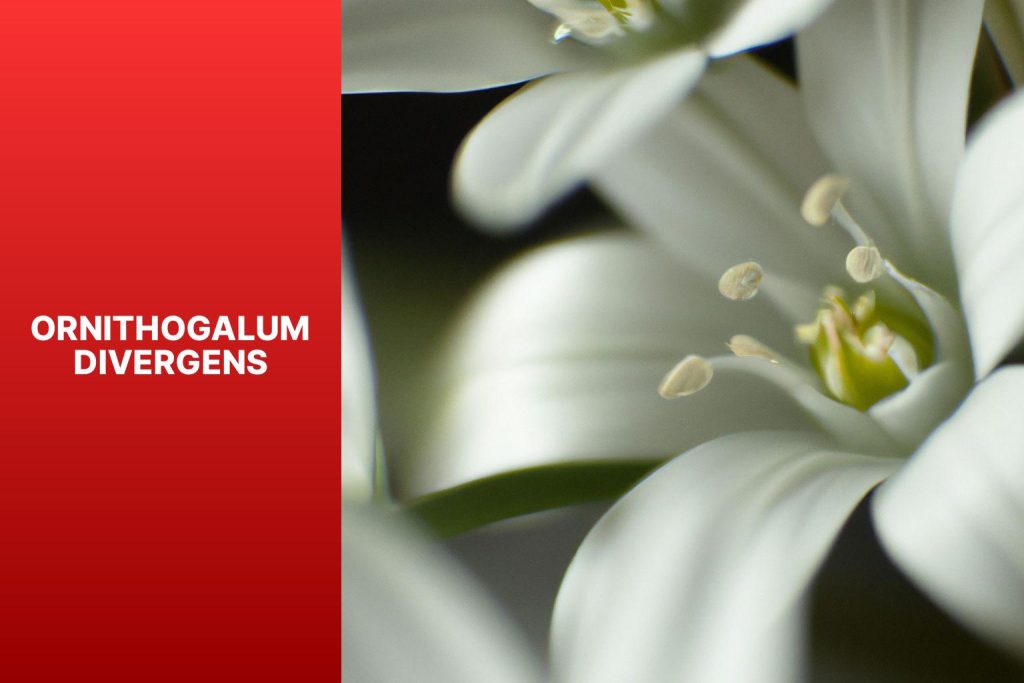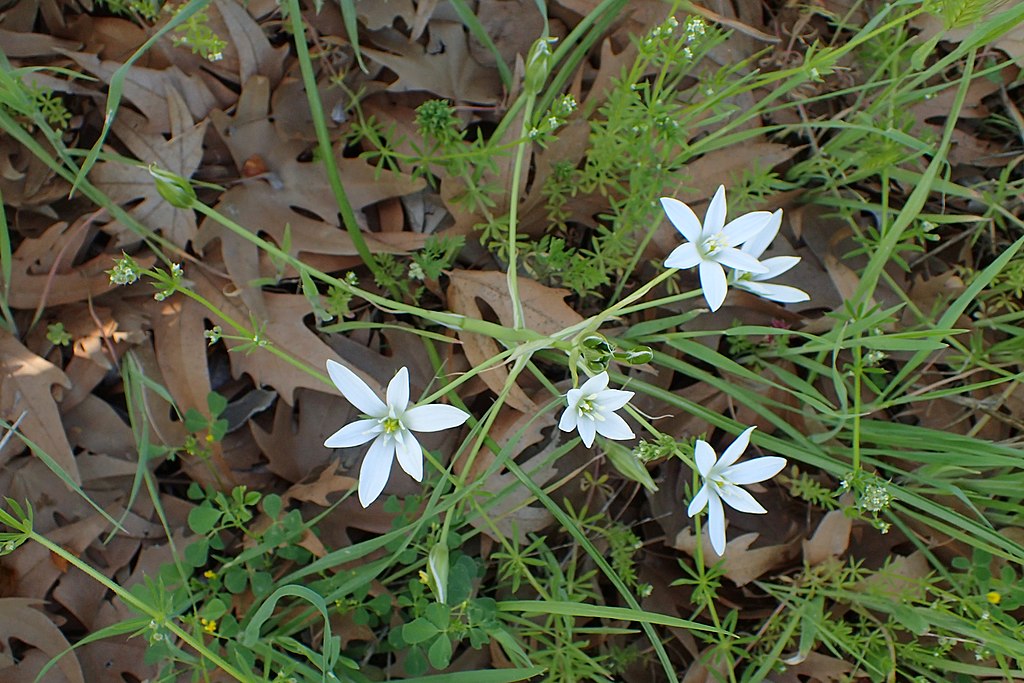Ornithogalum divergens is a species of plant in the Asparagaceae family. It is native to central Europe and the Mediterranean region. It is a perennial herbaceous plant that grows in open, sunny areas. It has narrow, elongated leaves and white, star-shaped flowers. Ornithogalum divergens is poisonous to domestic animals.
Ornithogalum divergens is an easy-to-grow perennial plant. It is native to Europe and Asia and is prized for its white, star-shaped flowers. Ornithogalum divergens is a cold-hardy plant that can tolerate temperatures down to -20 degrees Celsius. It is also not too demanding in terms of soil and light.

How Does Ornithogalum Divergens Look When Grown, and How Should It Be Planted?
Ornithogalum divergens flowers are white with green stripes. They are star-shaped and about 1 inch in diameter. The flowers bloom in the spring, from April to June. They are pollinated by bees and butterflies.
Table of Contents
To grow Ornithogalum divergens, choose a sunny or partially shaded location. The soil should be well-drained. Plant the bulbs in the spring at a depth of 5–10 centimeters and at a spacing of 10–15 centimeters. Water regularly, especially during the first year. Once established, Ornithogalum divergens only needs to be watered during periods of drought.
Ornithogalum divergens does not require fertilizer. However, you can apply a balanced fertilizer in the spring before flowering.
Ornithogalum divergens is a plant that is resistant to diseases and pests. However, it can be susceptible to powdery mildew. If you see signs of powdery mildew, spray the plant with a fungicide.
Ornithogalum divergens is an ideal plant for rock gardens, borders, and flower beds. It can also be grown in pots.
Here are some additional facts about Ornithogalum divergens:
- The scientific name of the plant comes from the Greek words “ornithos” (bird) and “gala” (milk), referring to the milky sap that the plant produces.
- The common names for the plant include divergent star-of-Bethlehem, nodding star-of-Bethlehem, and milk star.
- The plant blooms in the spring, from April to June.
- The flowers are pollinated by bees and butterflies.
- The seeds of the plant are dispersed by the wind.
- Ornithogalum divergens is a popular garden plant, but it is important to keep it away from pets.
Ornithogalum divergens is a beautiful plant that will add a touch of color to your garden or balcony. It is also an excellent choice for beginner gardeners.
Medical Uses Of Ornithogalum Divergens From History To Present
Ornithogalum divergens, also known as the lesser star of Bethlehem, is a flowering plant that is native to Europe and Asia. It has been used for centuries in traditional medicine for a variety of purposes, including:
- Anti-inflammatory: Ornithogalum divergens contains compounds that have anti-inflammatory properties. These compounds can help reduce swelling and pain caused by inflammation.
- Antioxidant: Ornithogalum divergens is a good source of antioxidants, which can help protect the body against damage from free radicals. Free radicals are unstable molecules that can damage cells and tissues, leading to chronic diseases such as cancer and heart disease.
- Antibacterial: Ornithogalum divergens has been shown to have antibacterial activity against some strains of bacteria. This means that it may be useful for treating infections caused by bacteria.
- Anticancer: Some studies have shown that Ornithogalum divergens may have anticancer properties. These studies have shown that the plant can inhibit the growth of cancer cells in vitro. However, more research is needed to confirm these findings in humans.
It is important to note that Ornithogalum divergens is not a cure for any disease. It should only be used as a complementary therapy under the guidance of a qualified healthcare professional.

Damages And Symptoms of Ornithogalum Divergens
Ornithogalum divergens, also known as the lesser star of Bethlehem, is a plant that is native to Europe and Asia. It is a member of the lily family and is known for its white, star-shaped flowers. While the plant is not considered to be highly toxic, it can cause adverse effects if ingested in large quantities. The toxic parts of the plant are the bulbs and the leaves. The symptoms of poisoning can include nausea, vomiting, diarrhea, abdominal pain, and headaches. In severe cases, poisoning can lead to seizures, coma, and death.
If you think that you or someone you know may have ingested Ornithogalum divergens, it is important to seek medical attention immediately. There is no specific antidote for poisoning by this plant, but treatment may include supportive care, such as fluids and electrolytes, and medications to control the symptoms.
Here are some tips to keep in mind to prevent poisoning by Ornithogalum divergens:
- Do not ingest any part of the plant.
- Keep the plant out of reach of children and pets.
- If you have the plant in your garden, be sure to keep it away from areas where children and pets may play.
- If you see the plant growing wild, do not touch it.
If you have any questions about Ornithogalum divergens toxicity, please consult with a healthcare professional.
Here are some of the potential side effects of using Ornithogalum divergens:
- Diarrhea
- Nausea
- Vomiting
- Stomach cramps
- Skin rash
If you experience any of these side effects, stop using Ornithogalum divergens and talk to your doctor.